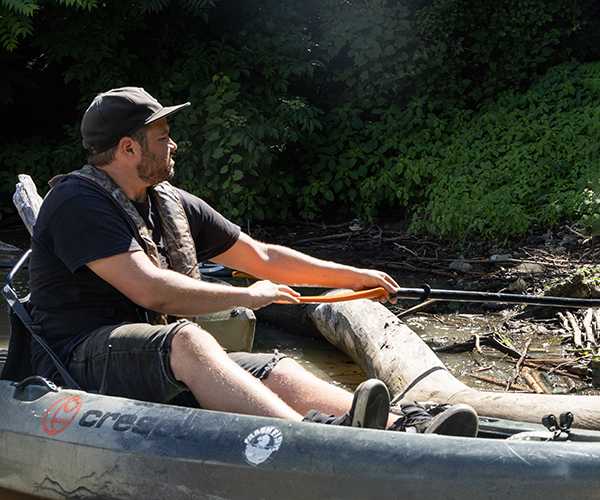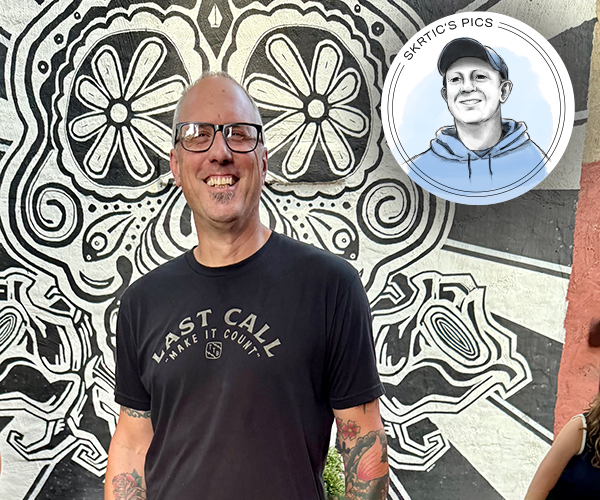If the name Dante Alighieri conjures little more than a hazy memory of high school English class, then here's a refresher — Dante is the 13th-century Italian writer of the classic literary work The Divine Comedy, an epic poem that imagines the author traveling through hell, purgatory and heaven.
But Dante is far more than required reading for Italians and Italian-Americans.
"Dante is one of the most important figures in Italian culture," says Italian-American sculptor and Cleveland native Sandro Bonaiuto. "Reading The Divine Comedy is like us reading Shakespeare."
In Bonaiuto's hands, Dante's likeness will soon be immortalized with a new bronze statue at the Italian Cultural Garden in Rockefeller Park, scheduled to be dedicated next spring. The project seems divinely created for Bonaiuto, a first-generation Italian-American who grew up in Cleveland Heights.
As a child, he didn't learn the language or visit Italy. Only after his parents passed away did Bonaiuto and his brother set out to explore the country of their heritage. Bonaiuto lived in Italy for 22 years studying the language and culture and developing a passion for Dante's works and influence.
A part-time art-restoration job in Rome gave Bonaiuto his first experience working with clay and revealed his natural talent in sculpture. He began studying sculpture and ceramics in Italy and got his very first commission with a larger-than-life depiction of the Holy Family, which became a gift to Pope John Paul II from the city of Faenza.
"It was like a big door opened," he says. "All of a sudden, another life began to appear."
Other commissions over the years have brought Bonaiuto back and forth from his adopted homeland to his birthplace in Cleveland. His work can be found locally at Knollwood Cemetery, the St. Andrew Benedictine Abbey and at St. Mary Catholic Church in Hudson. All are influenced by the great sculptors of history, Bonaiuto's heritage and his Catholic faith.
It was during one of Bonaiuto's stays in Cleveland that he met Joyce Mariani, executive director of the Italian Cultural Garden Foundation, who was working on plans to add a sculpture of Dante to the garden.
"I thought I'd have to go to Italy to get a sculptor," Mariani recalls. "When I met [Bonaiuto], I was floored. I knew he was the one for Dante."
Bonaiuto created his first sketch of the piece in July 2008, while Mariani began raising the $116,000 needed to erect the statue. It took two years, but the monument was finally approved in April with the support of prominent local Italian-Americans including Ken Lanci.
The initial stages of the statue's creation are less art and more construction. Bonaiuto used rebar, aluminum mesh, styrofoam and burlap soaked with plaster — "[those materials] are a good 45 to 60 percent of the sculpture," he says — to form the underpinnings of the life-size sculpture.
He fleshed out the fine details with a thin layer of plastolene clay, only to have the entire structure cut to pieces so the foundry can make casts for the bronzing process.
"I hate to even think of it," he says.
The statue will depict Dante in his mid-30s, the age at which he is believed to have written The Divine Comedy. Bonaiuto got a little extra help from technology. Italian archaeologists recently used virtual modeling techniques to reconstruct Dante's facial features from remains uncovered in 1921.
Bonaiuto conducted extensive research to ensure that Dante's clothing, headdress and medieval chair were true to period, and he loaded the structure with symbolism. It bears the crests of the cities where Dante was born and died, a crown of laurels often bestowed upon great poets of the time, and many elements repeated in threes to signify the three books of The Divine Comedy.
Even more important, says Bonaiuto, was the body posture and facial expression. He strove for empathy in Dante's face as he gazes thoughtfully over the garden with an open book and a poised pen.
"When I saw Sandro's portrayal of his piece, it was full of emotion," says Mariani. "That's the hallmark of Sandro's work. He makes things speak in what he does."



